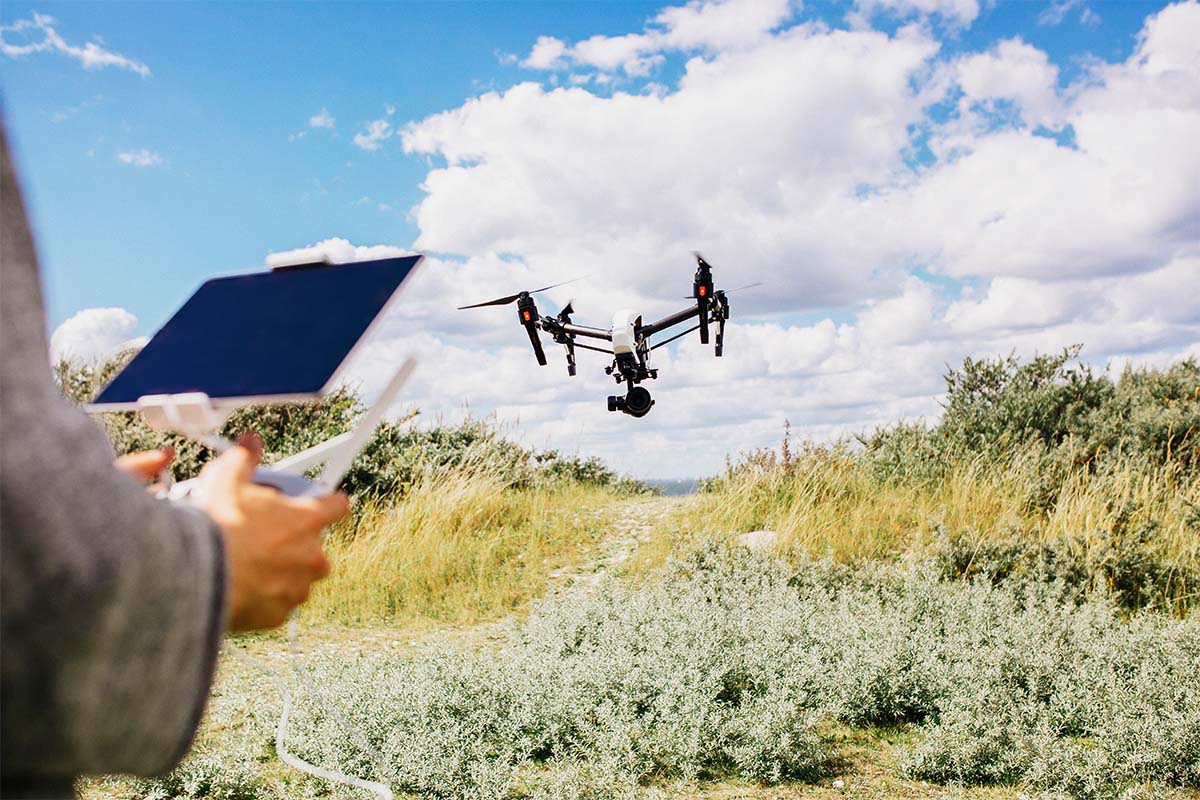
Innovative Uses of Drones for Documentary Videos
In recent years, drones have become an innovative tool for documentary filmmakers, opening up new possibilities for storytelling. Aerial shots that were once exclusive to expensive helicopter rides are now accessible at a fraction of the cost, thanks to drones. This shift has allowed video production companies to explore creative angles, capture breathtaking views, and delve into stories that were previously difficult to convey. In this article, we will explore how drones are transforming documentary videos, examining their benefits, limitations, and innovative applications.
Aerial Cinematography in Documentary Videos
Drones provide a unique perspective in documentary videos, allowing filmmakers to film the world from angles that were once impossible. From sweeping views of remote landscapes to intimate tracking shots of wildlife, drones can elevate the visual impact of any documentary.
Drones offer several types of shots that enhance the storytelling experience. For example, tracking shots can follow moving subjects, such as animals in their natural habitats or people engaged in action. These shots are particularly useful for nature documentaries or any project requiring movement through vast environments. Another popular shot is the reveal shot, where the drone ascends or moves away from a subject to reveal a broader context. This shot works particularly well in documentary videos focused on environmental issues, where the contrast between a small, isolated subject and a vast surrounding landscape can dramatically highlight the story’s theme.
In addition, the drone’s ability to mimic traditional crane shots provides video production companies with a flexible alternative. A low-altitude rise or pan can reveal an entire scene, giving the viewer a sense of scale without the need for expensive equipment. This flexibility has made drones an invaluable resource for a wide range of documentary subjects, from historical films to social commentary.
Innovative Uses of Drones in Documentary Videos
One of the most persuasive aspects of drones in documentaries is their ability to tell stories from new perspectives. Here are some ways drones are being used to innovate documentary filmmaking:
1. Preserving History and Culture
Drones are increasingly being used in historical and cultural documentaries to capture endangered sites or cultural practices that are hard to access. Aerial shots of ancient ruins, remote villages, or cultural festivals can provide a visual context that traditional ground-based shots cannot achieve. This is especially important in the preservation of historical sites that may be under threat from climate change or urbanisation. The bird’s-eye view offers viewers a broader understanding of the site’s significance and its role in the story.
For example, in a documentary about the historical ruins in Central Asia, drones can capture sweeping shots of vast archaeological sites, revealing their layout and scale, which would be impossible with a ground-level camera.
2. Wildlife and Environmental Documentaries
Drones are perhaps most widely known for their role in filming nature and wildlife footage. With the ability to follow animal migrations or survey large areas of forest, drones provide an unobtrusive way to document wildlife. For example, drones can track herds of animals without disturbing their natural behaviour, which is a common challenge for traditional filmmakers. They can also cover large areas quickly, allowing production teams to document environmental changes, such as deforestation or the effects of climate change, from a bird’s-eye view.
A drone’s capability to move in and out of tight spaces, like dense forests or mountain ranges, enables filmmakers to capture visuals that would have previously required months of planning, costly helicopter rides, or specialised equipment. Additionally, drones can provide unique aerial perspectives of ecosystems, such as coral reefs or glacial fields, allowing for stunning imagery that adds depth to the environmental story.
3. Social and Political Documentaries
Documentary videos that address social and political issues also benefit from drones. Whether filming sprawling urban areas or isolated rural communities, drones can offer a broader view of the setting, providing context for the subjects involved. For example, a film exploring urban development might use aerial footage to contrast areas of intense growth with others that remain untouched. Similarly, drones can capture protests, mass gatherings, or human migration in ways that emphasise the scale of the movement, offering powerful visual narratives without the need for intrusive ground-based filming.
In political documentaries, drones can provide context to issues of displacement or conflict, showing the breadth of a refugee crisis or the stark contrast between developed and underdeveloped areas. These perspectives help viewers understand the scale of the situation, offering a visual dimension to the human story being told.
Benefits and Limitations of Drone Filmmaking
The rise of drone cinematography has undoubtedly transformed documentary videos, but it is not without its challenges. Understanding both the benefits and limitations of drone use is essential for anyone looking to incorporate this technology into their projects.
Benefits:
- Cost-Effective: Drones are significantly cheaper than traditional aerial cinematography, making it possible for projects of a smaller scale and budget to include aerial shots without breaking the bank. What once required a helicopter and a crew can now be accomplished with a much smaller budget.
- Accessibility: Drones can reach remote and difficult-to-access locations that may have previously required significant resources. This accessibility enables filmmakers to capture unique footage from hard-to-reach places, such as mountain tops, dense forests, or isolated islands.
- Flexibility: Drones offer the ability to capture dynamic and flexible shots. They can fly in any direction, at varying altitudes, and can adjust speed according to the scene’s needs. Whether for tracking a moving subject or filming a still landscape, drones provide flexibility that traditional camera setups cannot match.
Limitations:
- Weather Conditions: Drones are susceptible to weather conditions. Strong winds, rain, and fog can interfere with flight stability and image clarity, making it difficult to capture high-quality footage in certain environments.
- Battery Life: The limited battery life of drones is another constraint. An experienced production company will always plan shoots carefully to ensure that enough time is allotted to film all necessary footage before the drone needs to recharge. More importantly, a professional production team will have backup batteries handy to avoid any filming delays.
- Legal Regulations: Many countries have strict regulations regarding drone usage, especially in urban areas or near sensitive locations like airports or military zones. A knowledgeable production company will always ensure they have the proper permits and are familiar with airspace regulations before filming.
Creative Examples from the Industry
Several documentaries have successfully used drones to enhance their storytelling. In the 2017 documentary The Last Refuge, filmmakers used drones to capture the expansive landscapes of the Middle East, providing a sweeping view of the political and environmental issues the film addressed. The use of drone footage helped illustrate the vastness of the challenges being faced by displaced people and the natural environment, allowing viewers to see the magnitude of the crisis in a way that traditional cameras could not achieve.
Similarly, in Our Planet (2019), narrated by David Attenborough, drones were used to follow animal migrations and to capture stunning aerial views of ecosystems from above. These breathtaking visuals were essential in highlighting the beauty of the natural world and the need for its conservation.
The Future of Drone Technology in Documentaries
Drone technology continues to evolve and its potential continues to become more evident in documentary videos. Future advancements may include drones with improved stabilisation systems, longer battery life, and more powerful cameras that allow for higher-quality images in challenging environments. Furthermore, the integration of artificial intelligence (AI) could lead to drones that can autonomously follow subjects, plan their flight paths, and capture complex shots without human intervention.
Another exciting prospect is the integration of drones with virtual reality (VR) and augmented reality (AR). Drones could play a significant role in creating immersive documentary experiences, allowing viewers to explore scenes in 360 degrees from the comfort of their homes. This could change the way documentaries are consumed, offering a more interactive and engaging experience for audiences.
Conclusion: A New Era in Documentary Videos
Drones have transformed documentary videos by providing video production companies with new resources to tell their stories. From offering aerial perspectives that add depth and context to filming hard-to-reach subjects with ease, drones have opened up a world of creative possibilities. As technology advances, we can expect even more innovative uses for drones in the world of documentary video production. Production companies will continue to explore new ways to use these versatile tools to film the world in ways that were once unimaginable. While challenges such as weather conditions and legal regulations remain, the overall impact of drones on documentary videos is undeniable. Whether capturing the beauty of nature or illustrating the struggles of the human experience, drones are playing an increasingly significant role in shaping the stories of tomorrow.
Want to see your documentary from a fresh angle? At Sound Idea Digital, we’ll help you take your story to new heights—no helicopter, no problem. Let’s make your film fly (literally) without all the extra baggage! Contact us today.
We are a full-service Web Development and Content Production Agency in Gauteng specialising in Video Production, Animation, eLearning Content Development, Learning Management Systems, and Content Production.
Contact us for a quote. | enquiries@soundidea.co.za | https://www.soundideavideoproduction.co.za| +27 82 491 5824 |

